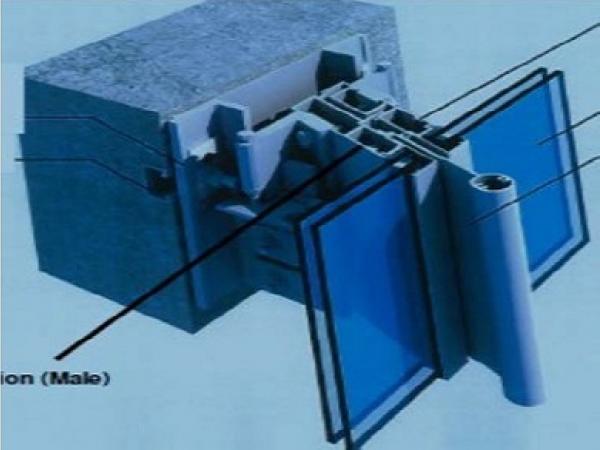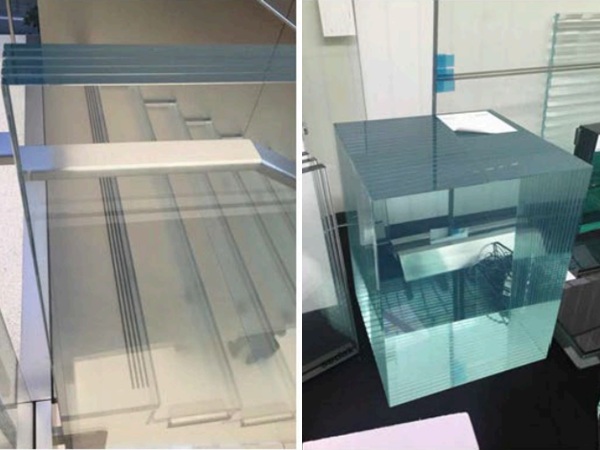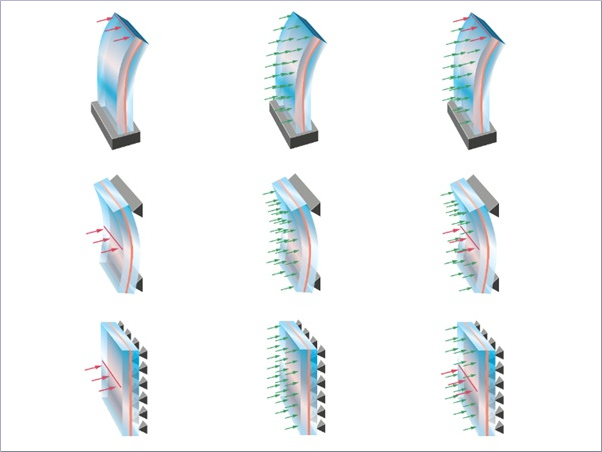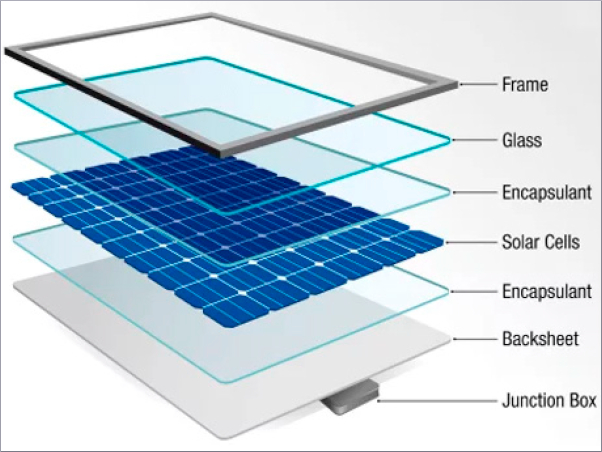AUTHORS:
Pallavi Taywade, Student of M.I.T. Pune, Civil Structural Engineering;
Santosh Shejwal, Sr. Engineer at Tata Blue Scope Steels Pune.
Abstract
Façade Engineering is the art of resolving aesthetic, environmental and structural issues to achieve the enclosure of habitable space. Today lightness and transparency are properties that both architects and clients try to obtain. This has rapidly increased the use of glass in facades. By using steel as a load bearing structure, it is possible to keep the transparency restricting structures slim.
The aim of this master’s thesis is to gather together information on research, design and codes about the structural design in steel-glass facades. The use of glass in facades causes many problems due to the material properties of glass. Glass differs from other building materials in aspect of being an extremely brittle material and breaking without a forewarning.
This material property of brittleness has to be taken into account when designing large glass facades. The requirements of designing load-bearing structures are normally gotten from either the glass supplier or the producer of glass pane elements, who both are thereby responsible for the strength and functionality of the fastening.
I. INTRODUCTION
Façade is a French origin word meaning the front face. The use of glass in the exterior facades provided more of light and good ambience to the occupant of the building which gave rise to the increasing use of glass. For the architectural point of view the use of glass gave aesthetic view to the building itself.
A structure supported by aluminum frame work which is made up of Mullion and Transom is called as a curtain wall. Mullion is a vertical support or we may call it as a column, while the transom is a horizontal support likely to a beam. The first curtain walls were made with steel mullions, and the plate glass was attached to the mullions with asbestos or fiber glass modified glazing compound.
II. TYPES OF CURTAIN WALL GLAZING
Curtain wall meaning a set of aluminum profile like Mullion, Transom, Glass panel.
Figure: 1.1 Parts of Unitized System
There are three types of curtain wall
1.1 Stick System
1.2 Unit Panel System (Unitized)
1.3 Unit Mullion System (Semi unitized)
Above three we used the unit panel system which is also called as unitized system.
This system comes pre-assembled; it can be pre-glazed at the factory or shop, or glazed on-site. As such, it minimizes field labor and erection costs, and promises a shorter installation period than the stick system. Quality control issues can be significantly reduced in terms of site labor, especially with pre-glazed units, but assembly at the plant and transportation (due to bulk) increases its cost.
Another disadvantage to pre-assembly is any site changes become difficult to accommodate. Assembly must be carried out in a specific sequence to ensure a proper fit. In a unitized system, the manufacturer must rely on qualified installers to ensure that the air seals are properly installed between the split mullions. Nevertheless, the unitized system is the most popular façade system according to on manufacturer and it has performed satisfactorily when installed correctly.
Figure: 1.2 E-Type Unitized System
Male Mullion and Female Mullion combine forms the unitized systems.
Figure: 1.3 Assumption of Stress Distribution
Figure: 1.4 Fixing details of unitized curtain wall system
Figure: 1.5 Unitized Curtain Wall Panel.
III. STRUCTURAL DESIGN
The Curtain Wall is designed to resist and handle all the imposed loads on it as well as keep air and water from penetrating in the building. The loads imposed on the curtain wall are transferred to the building structure through structural interface (i.e. brackets) which attaches the mullions to the building. The curtain wall is designed for the following Loads.
1.Dead Load
2.Wind Load
Applicable Standard Codes
IS 875-1987 (Part -1 Dead Loads) Indian Standard Code of Practice for Design
IS 875-1987 (Part -3 Wind Loads) Indian Standard Code of Practice for Design
IS 8147-1976 Indian Standard Code of Practice for use Aluminum alloys
IS 800-1984 Indian Standard Code of Practice for general construction in steel
Software’s used for Analysis & Design:
STAAD Pro V8i (For Structural Analysis)
Typical Mullion Analysis
Figure: 1.6 UDL Due to Wind Load
Max Span (L) = 3.65m
Max Cross Span (S) = 1.05m
Number of transom per unit = 2
Max BM = 4.02 kN/m
Deflection Calculation of Mullion
Max Deflection = 6.11mm ….. From STAAD PRO
Permissible Deflection (Lesser) = Span/175 = 20.86mm or 19mm
Therefore Max deflection = 19.00mm
- 6.11mm
From STAAD Results
Fig:1.7 Shear Force Diagram For Mullion
Fig: 1.7 Bending Moment Diagram For Mullion
Figure: 1.8 Deflection Diagram For Mullion
Design of Glass: Using Code ASTM 1300
Glass module: 1.05m (a) x 1.220m (b)
Type of Glass = (10mm) + (12mm Air Gap) + (6mm)
Wind load = 2.305 kPa
The max centre deflection of the glass = 4.00 mm
Max allowable centre deflection of the glass = Span / 90 or 25mm whichever is less
= 1050/90 =11.66 mm
Base Plate Design
Width (B) = 300 mm
Depth (D) = 300 mm
Thickness = 8 mm
Max BM = 0.46 kNm (BM/2)
Check For Connection Bolt
Max Vertical Shear Force = 2.6 Kn (V)
Max Horizontal Shear Force = 2.6 kN (H)
Resultant max shear (V) = 5.7 kNm
Check for mullion bending stress
Min Thickness = 2.5 mm
Dia of hole = 11.5 mm
No. of bolts = 2
No. of interference = 2
Bearing Stress = 49.14 N/mm2
Permissible bearing Stress (6063 T6) = 139 N/mm2
IV. CONCLUSION
1. Glass has become a major element in designing modern commercial or public buildings. Load-bearing structures are wanted to be delicate systems with a transparent feel.
2. The use of steel in load-bearing structures improves the transparency of facades because it has been possible to keep the load-bearing structure slender.
3. The main aspect in designing steel and glass joints is to consider the special material properties and behavior of glass.
4. Glass fractures brittle without a forewarning. These properties and behavior concern normal float glass as well as laminated glass and safety glass.
ACKNOWLEDGMENT
At the completion of this M.E. (Civil-Structure) project, I feel obliged to extend my gratitude towards all those who made valuable contribution throughout the duration of the Project.
I would like to express my deep and sincere gratitude to my Guide Dr. Mrudula S. Kulkarni, Her wide knowledge and logical way of thinking have been of great value for me. Her understanding and personal guidance have provided a good basis for the present thesis.
I would like to express my deep and sincere gratitude to Mr. Vishal Sutar (S.B.U. Head, Façade Concept Design Pvt. Ltd, Navi Mumbai) for giving me an opportunity to work as an intern in his organization. His valuable inputs, precise guidance, incessant encouragement and vigilant supervision were instrumental in carrying out this work. I truly appreciate all the efforts, he and his staff took in helping me.
I would like to express my special thanks to my Husband Mr. Santosh Shejwal (Sr. Design Engineer at Tata BlueScope steel) for his assistance received during the study, which is highly appreciable.
I owe my gratitude to my family who have always stood by me and have encouraged me in my every endeavor. Last but not the least, I express my thanks to all of my friends for their support during my project.
REFERENCES
[1] Analysis and Design of Curtain Wall Systems for High Rise Buildings A dissertation submitted by Wong Wan Sie, Winxie In fulfilment.
[2] Façade Engineering Filtering the external environment.
[3] Lighter, more elegant, more resistant and more cost-effective – façade engineering profits from the use of laminated safety glass made with DuPont™ SentryGlas® inter layers.
[4] Department of Architecture and Civil Engineering, Centre for Window Cladding Technology.
[5] Burj Al Dubai Facts and Structural Details Presentation - (Malestrom).
[6] Guidelines for use of glass in building Dr. N.K. Garg.
[7] New age international (P) Limited, Publications.
[8] Staining of Façade Michael Y L Chew.
[9] Websites
[10] http://www.byggmek.lth.se/fileadmin/byggnadsmekanik/publications/tvsm3000/web3071.pdf
[11] http://www.arbo.co.uk/wp-content/uploads/2011/11/DESIGN-COMPONENTS-FOR-STRUCTURAL-GLAZING.pdf
[12] www.facadestructures.com
[13] http://www.interarchinfra.com/application-facade-lnterfaces.asp?lk=lnk15
[14] http://www.steelconstruction.info/Facades_and_interfaces
[15] http://www.rjc.ca/structural_glass_and_facade_engineering
[16] https://www.pilkington.com/en-gb/uk/products/product-categories/glass-system
AUTHORS
First Author – Pallavi Wamanrao Taywade, M.E.Structures, M.I.T. Pune, pallavitaywade@ymail.com
Second Author –Santosh Dinkar Shejwal, B.E.Civil, T.B.S.L. Pune.
Correspondence Author – Dr. M.S. Kulkarni, PHD in Structures. HOD of Applied Mechanics, M.I.T.Pune.

















